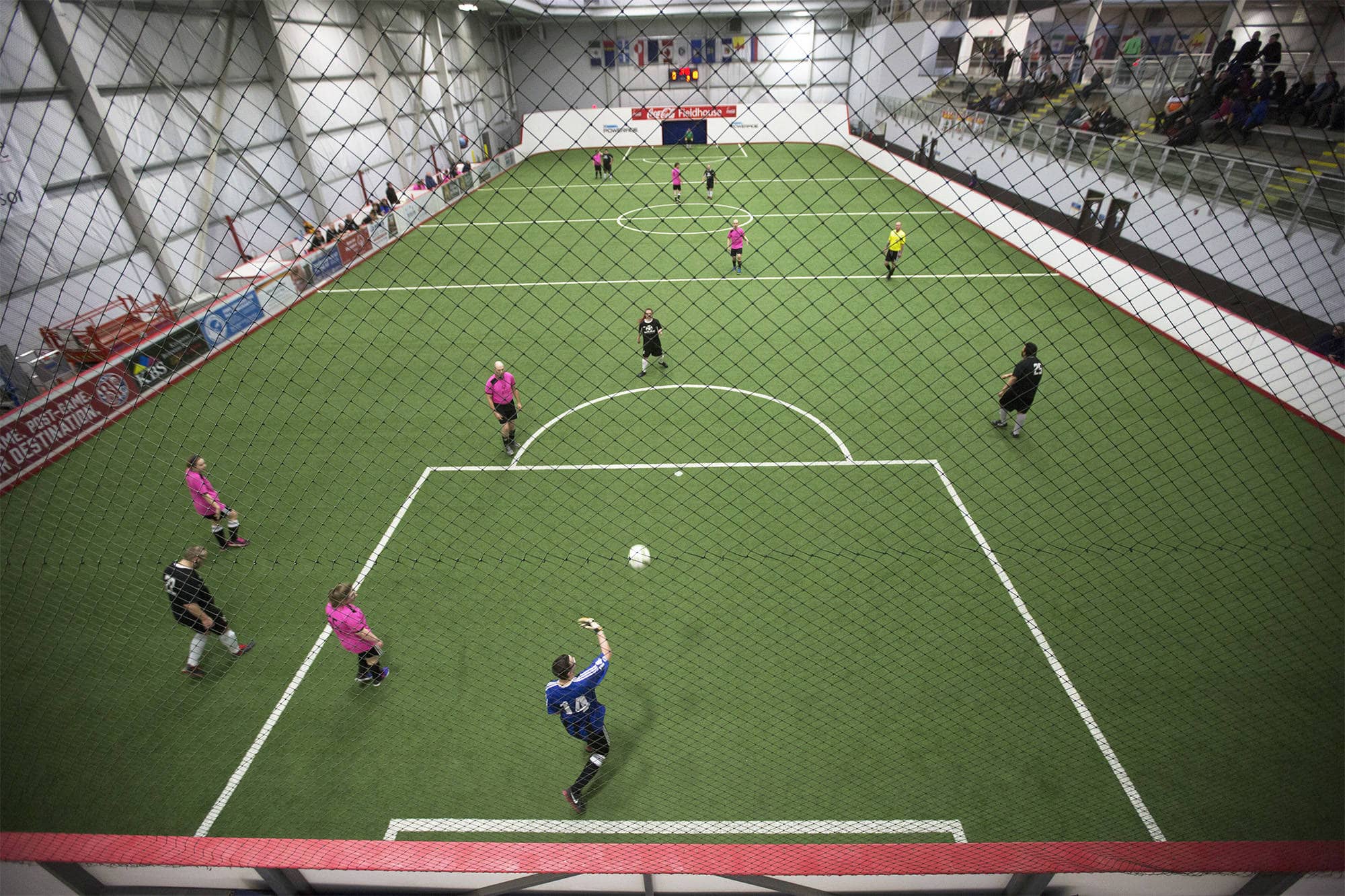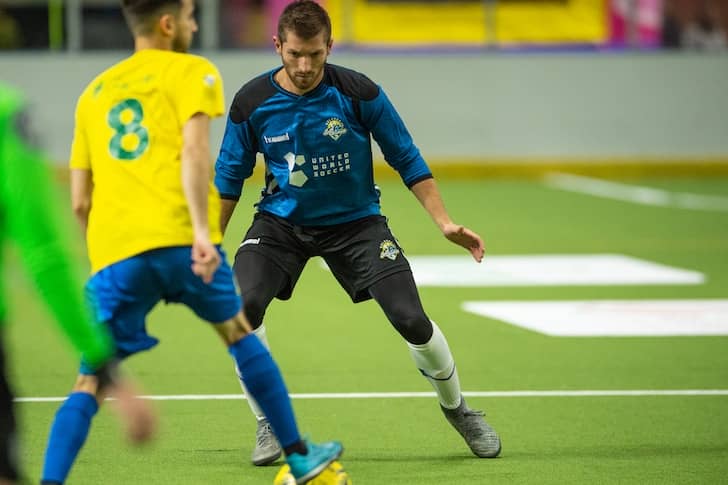
The Secret to Soccer?
Soccer requires a myriad of skills. A large percentage of what is needed to make the grade at the highest level comes from the right mentality.
But more on that later. In terms of skill? A soccer player needs one thing, first and foremost.
A good touch.
A soccer player who can caress the ball will be highly coveted by other teams – and more often than not will command a spot in the team sheet before all else. Why is this so?
Because the difference a good touch makes can change a game.
If a soccer player is able to trap a ball that comes at them with speed, it means they can then either deliver a pass, cross or shoot far quicker than a player who fails to trap the ball with any degree of control.
A good touch gives a player valuable seconds to make the right decision – and in a frenetic game like soccer, those seconds make the difference between victory and defeat.
Being able to control the ball in all manner of circumstances can be taught, but mentality comes into it primarily. Because to develop a good touch, a soccer player must devote themselves to it. It takes years and years of constant training.
Also read: Why Are Soccer Teams Called United?
Soccer – But Samba Style

And it is why Brazilian players are so successful.
A large part of a Brazilian soccer player’s game is close control. They can run at speed with the ball controlled as if by magnetic force. And this hails from years and years playing a derivative of soccer, called Futsal.
Futsal is soccer, but indoors. And the dimensions of the pitch are tiny in comparison to a full soccer pitch. Five players n each side, with small goals to aim for, the games are quick and technical.
And Brazilian soccer players are trained on these pitches and play in Futsal games from a very young age. And they never stop playing Futsal either. Even when making it as a pro, they will continue to play Futsal as it keeps a player sharp when it comes to their touch and their awareness.
Indoor soccer from a young age can help a budding player develop the right tools that the majority of their colleagues won’t have. In South America, indoor soccer is common.
But in Europe? Less so. And the players who were known for their excellent touch, usually had to go to other lengths to achieve the velvety control they were famed for.
Zinedine Zidane, Thierry Henry – two French and worldwide footballing icons. Both famed for the way they could control the ball as if on a string. And both players were helped by playing urban football in closed off areas reserved for ball games. The pitch is made of concrete and if you haven’t got a ball, a can will do. These games also normally featured players of any age, so these kids had to grow up fast.
Dennis Bergkamp, of Netherlands and Arsenal fame, was masterful when it came to his touch of the ball. And in his autobiography, Stillness and Speed, he details how he became so good at controlling the ball. Even after soccer practice ended, he would get his ball and he would go outside, kicking the ball against the wall. Taking turns with his left and right foot to control the ricochet as it smacked off the brick wall. He did this for years.
And Futsal gives Brazilian players the edge when it comes to close-quarters control. When their team is in a bind and under pressure, the ability to take the ball in tight spaces and escape the clutches of the opposition can convert defence into attack with the swish of a boot and the drop of a shoulder.
Indoor soccer really does give soccer players a big advantage. And it isn’t just with their first touch that they can benefit from playing this version of the game.
Playing indoors, in tighter spaces, also calls for composure. The ability to make decisions under pressure really does give you the opportunity to make a big impact in a game. When you have players attempting to take the ball from you every second, it means you have to have your head on a swivel and your brain completely focused on what you will do next.
If you couple that with a good touch, it makes for a very special type of player. But all too rare as well. The amount of soccer players who have both traits in abundance are low – and they are memorable too.
Before you begin taking up Futsal however, there are differences between indoor soccer and futsal.
Also read: What Is A Wingback In Soccer?
Indoor Soccer vs. Futsal – What’s The Difference?

Firstly, Futsal is played on ceramic or wooden surfaces, whereas indoor soccer is played on artificial turf. While both versions of the sport offer a focus on close control and decision making, indoor soccer is more readily available in terms of pitches.
And if you’re looking to get that advantage over other teams or players – or you’re simply looking to get into shape, then indoor soccer really offers that in plentiful supply.
It all depends what you’re looking to focus on. If it is to develop team spirit and cohesion, then a training game of 6v6 is perfect. It helps with fitness firstly, as it is fast paced. But teams develop a bond and awareness of each others position, which can really help.
With indoor soccer, many players get obsessed with taking on a player and beating them with some form of trick. Firstly, this is incredibly difficult to do. Secondly, passing to a teammate is always the best philosophy. So try and develop a one-toucb passing drill between your teammates. Taking an extra touch eats up valuable seconds, so passing on your first touch can open up space and also bamboozle a defender.
Training Drills, Tips, and More – What To Know About Indoor Soccer
Another training focus for indoor soccer is a counter-strike. As the pitch is so small, you need every player doing their defensive work, as even a yard of space can be punished. So ensure that when you do get on the ball, your players are on their toes and ready to receive in space. If you’re ready, it can convert defence to attack with one well placed pass. The counter-strike can also be achieved by having a ‘planted’ player.
This means that you have one of your teammates stationary in a position, normally high up the pitch. This gives you a foothold when you do get the ball, an outlet. You can also have this in defence, so the opposition has to go around that player and may leave a gap.
There are a few tips should you continue playing indoor soccer, that can really help.
Number one must be to keep the soccer ball low. It helps with pass accuracy and the game speed is maintained. A ball in the air can be contested a lot easier.
Always try and make sure you have a few good substitutions to call on. This game is like squash – physically sapping as you’re always on the move. So having someone to come on and keep the levels up really helps.
And remember that passing drill we talked about earlier? Try and practice passing the ball ahead of the player. So whatever direction the player you’re passing to is facing, place it about a yard in front of them. It makes it easier to advance forward. If you pass the ball straight to them, it may require adaptation to control it, more often leading to losing possession.
That should be enough to get started on, but the main thing is that you enjoy the game. Indoor soccer is great fun – and if it helps you get better at soccer and fitter at the same time?
What’s not to like?



